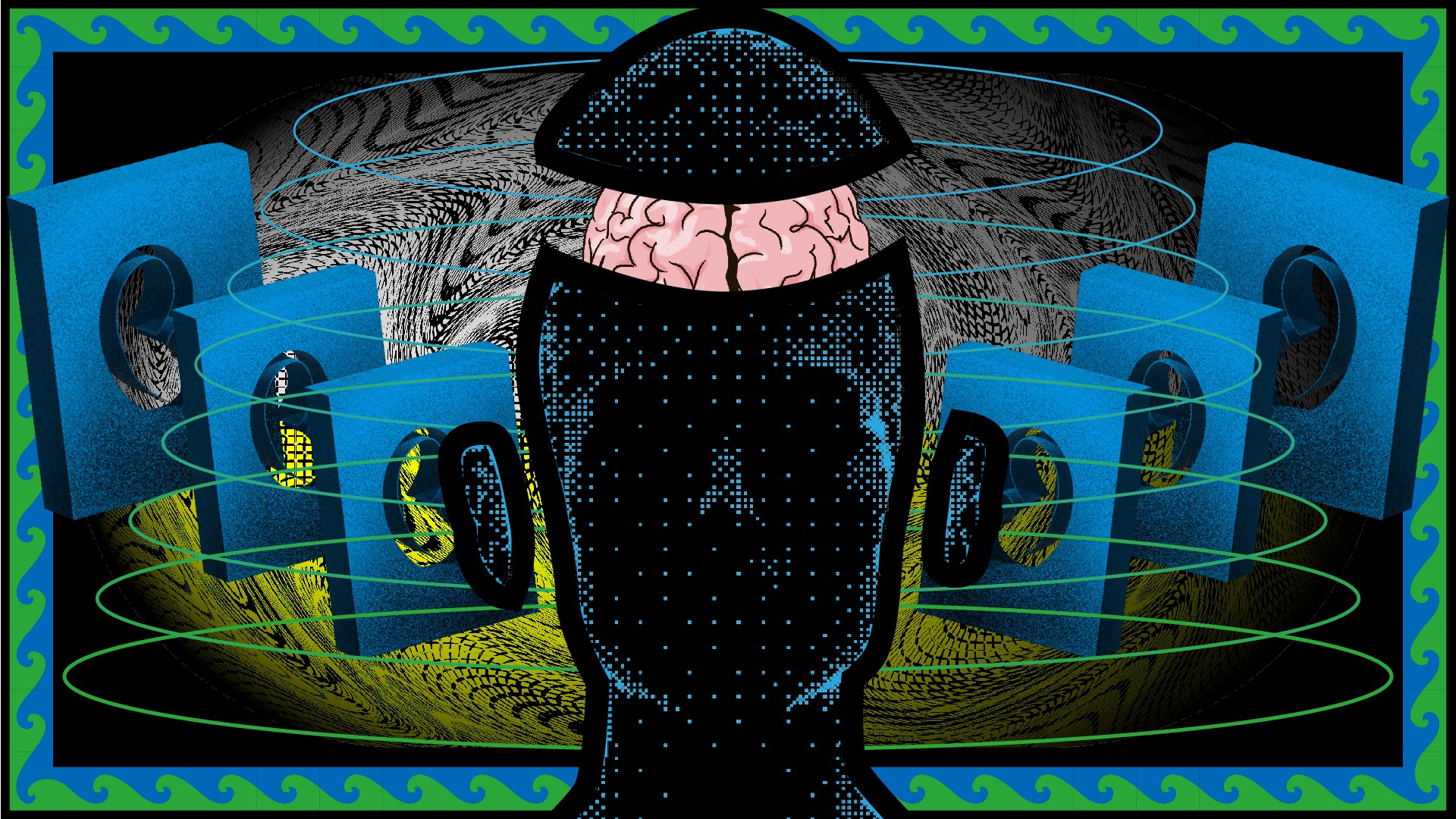In music, there are elements that are undeniably and universally deciphered by the brain. We can discern rhythm, tempo, melody, timbre, volume and tone, making them fundamental aspects of human musical perception. There are several areas of the brain working to interpret these perceived sound elements, but one of the first things the brain does is group them together. What sounds similar, according to different principles, is organized to create coherence. But this search for coherence outweighs the fact that sometimes there is none.
This series on music and the brain will explore musical perceptions and cognitive interpretations via the multitudes of neural connections and areas involved in sound processing. In this first part, we discover how, in trying to make sense of what it hears, the brain plays with our senses.
Auditory illusions
1. The concept of the missing fundamental
When we hear a sound, we actually hear its basic tone (fundamental) and several other notes (frequencies) at the same time. These are the harmonics of the sound signal. If you remember the beep your phone made on the home line (A 435 Hz), that sound didn’t actually exist. The brain is so well attuned to harmonics that, given a sound signal, it quickly recognizes all the harmonics, allowing it to infer information about the fundamental note. This is handy, since most landline telephones have a limited frequency range (300 Hz-3400 Hz). The brain can therefore make us perceive the fundamental frequency of the male voice – which is around 150 Hz – without this frequency actually being present over the phone.
This effect can be useful for a wide range of sound equipment to produce notes lower than they are actually capable of. This phenomenon is present when we hear the lowest notes of a piano or a double bass: we don’t actually hear 27.5 Hz or 35 Hz because these instruments don’t produce enough energy at these frequencies. Our brain fills in the information to give us the illusion that the tone is that low.

2. Perceptual filling-in
In the image above, the squares don’t actually exist. It’s through the cognitive mechanism of perceptual filling-in that we can judge a figure as complete when part of it is hidden or in the blind spot of the visual field. This visual bias also works in the same way with hearing, creating musical elements that don’t really exist. Listening to Christian Sinding’s “Rustle of Springs” or the beginning of Chopin’s “Fantaisie Impromptu” (Op. 66), the notes go so fast that a melody seems to emerge. If you slow down the tempo, this melody fades away.
3. The principle of continuation
The auditory system applies gestalt principles of similarity and proximity to connect similar sounds together, so as to organize and interpret sound stimuli in a coherent and meaningful way. In the intro to The Eagles’ “One of These Nights”, we hear the bass and guitar as one instrument. Yet the bass plays a note and the guitar does a glissando.
This same kind of effect is found in the song “Lady Madonna” by The Beatles. In an instrumental section, the members sing into the microphone while covering their mouths with their hands, and what we hear resembles a saxophone tone. The notes played, together with the experience and expectation that this instrument is typical of this kind of music, cause our brain to infer that it is indeed a saxophone. Later in the song, however, we hear a real saxophone solo, and the illusion disappears.
4. The Shepard scale
On the visual side, Shepard tables demonstrate how our brain’s rules alter our perception. Shepard tables are actually a pair of identical parallelograms representing the tops of two tables, but the illusion makes the tables look completely different as the rules of three-dimensional objects take over. The musical Shepard scale is based on this perception of a movement or change that defies physical reality.
These deceptions of the brain were uncovered by Roger Shepard, an American scientist specializing in cognitive psychology. The scale allows us to compose melodies that never end: the Shepard tone. We perceive an infinite ascending or descending melody, although the tones don’t really change pitch. Penrose’s staircase is a good visual representation of this. The application of this technique adds suspense and tension, and can be used to give the impression of acceleration in the soundtrack. Hans Zimmer often uses this technique in his compositions. The effect can also be used in reverse. In this case, we get the impression that the sound is constantly descending, and we feel more of a release than a tension.
5. Octave illusion
The octave illusion is a fascinating auditory illusion that defies our usual perception of pitch. In this illusion, a pair of tones separated by an octave interval is presented. We should hear a lower and a higher note with both our ears. However, listeners may perceive these sounds in different ways: sometimes they are perceived at the same pitch, sometimes the tones are perceived as being at different pitches.
This is due to the brain’s selection of information and our body’s lateralization. As there are more right-handed people, there are more people who use their right ear to hear. Higher-pitched sounds are perceived by the right ear, and lower-pitched sounds by the left. The opposite is true for left-handers. The brain, relying more on high-pitched sounds to perceive the origin of sound accurately, interprets that the high-pitched sound comes from one side and the lower-pitched sound from the other. So we hear one sound coming once from one side, and the other coming from the other.
It’s fascinating that even after becoming aware of auditory illusions, we often continue to perceive them as such. Stay tuned for the next article in our series to explore other aspects of the cognitive processing of music even further.
Written by Caroline Boivin
Illustration by Holly Li






















